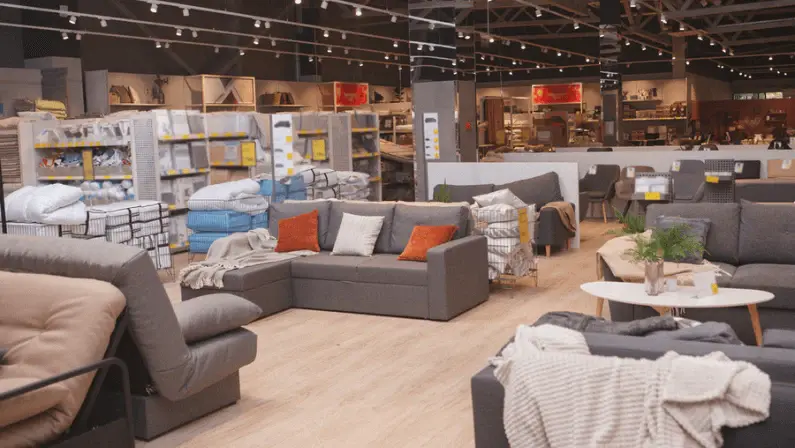It’s tempting. You find a stylish couch with one click, maybe even discounted. It ships in a few days. The convenience of online furniture shopping has never been more appealing—or more widespread. But while digital showrooms offer speed and selection, they also come with risks you might not realize until the box shows up at your door.
There’s a growing case for skipping the screen and heading to your local furniture store instead. In fact, when it comes to choosing furniture you’ll actually love (and live with), the in-person experience often proves to be far more valuable than its virtual counterpart.
Let’s break down why brick-and-mortar still matters—and why it might be exactly where your next favorite piece is waiting.
You Get to Touch Before You Buy
No matter how good a product photo is, it can’t replicate the feel of sitting on a sofa, the smoothness of a tabletop, or the firmness of a mattress. Online descriptions are often vague or overly promotional, and what looks cozy on screen can turn out to be stiff, small, or poorly made.
In-store, you can:
- Sit, lean, lie down, and see how the piece fits your body
- Test drawer mechanisms, hinge durability, and material texture
- Compare multiple items side by side
This hands-on clarity is something only a physical furniture shop can provide. It eliminates guesswork and reduces the risk of disappointment—saving you time and effort in the long run.
The Scale Is More Real Than Any Website Can Show
Ever order a coffee table online that ended up looking like a dollhouse prop? Or a sectional that swallowed your entire living room?
One of the biggest challenges with online shopping is scale. Even with dimensions listed, it’s hard to visualize how a piece will interact with your actual space. Photos are often styled in rooms much larger (or smaller) than your own, creating a false sense of proportion.
At a local furniture store, the layout is true to life. You see pieces arranged in relatable room settings. You notice how tall that dresser really is. You understand if the chair’s width works for your space—and whether it dominates or disappears.
That kind of real-world context is critical to making informed, confident decisions.
Color and Texture Can Be Misleading Online
Monitors don’t always tell the truth. A “light gray” couch online might turn out to be blue-tinted in person. A “smooth oak finish” could look more plastic than wood. And what you think is soft velvet may arrive scratchy and thin.
When you shop in person, you see how colors respond to real lighting, how materials age or reflect light, and whether the aesthetic holds up beyond the screen.
This is especially important when trying to match furniture with existing pieces in your home. In-store, you can bring samples, compare tones, and avoid costly mismatches.
Delivery, Assembly, and Support Are Easier to Navigate
Online retailers are often vague about shipping windows, assembly requirements, or return policies. Customer service, if available, may be limited to chatbots or call centers with long wait times.
Shopping with a local furniture store usually means:
- Transparent delivery options and timelines
- In-house setup or white-glove assembly
- Real people to answer questions and solve issues quickly
If something goes wrong, you have a direct point of contact—someone accountable, not anonymous. That peace of mind is worth more than two-day shipping.
You’re Supporting Local Business and Craftsmanship
Every time you buy from a neighborhood furniture shop, you’re investing in your community. You’re helping local jobs, encouraging craftsmanship, and keeping design options close to home.
Businesses like What’s New Furniture are often deeply involved in the communities they serve. They know the region’s design preferences, climate needs, and floor plan trends. That insight translates to better recommendations, more relevant inventory, and a more personal shopping experience.
Beyond economic support, there’s emotional value in knowing who made or sold the pieces in your home. Furniture feels more meaningful when it comes with a story—and a handshake.
Design Help Is Included—Not an Add-On
In-store shopping often comes with the perk of real-time design help. Many furniture professionals are trained to offer layout advice, fabric pairing suggestions, and space planning guidance. All at no extra charge.
You don’t have to figure out if that sectional will block your hallway or clash with your rug—they can help you make sense of it. You can even bring room dimensions or photos and get real feedback from someone who understands design beyond aesthetics.
Try getting that kind of attention from a product filter or AI chatbot online.
Instant Gratification (and Fewer Surprises)
Online furniture often takes weeks—or months—to arrive. And when it does, there’s always a sliver of doubt. Will it be what you expected? Will it show up intact?
With in-person shopping, you know exactly what you’re getting. In-stock pieces can sometimes be taken home the same day, or scheduled quickly with trusted local delivery teams.
No waiting. No surprises. No dreaded unboxing moments where disappointment outweighs excitement.
Final Thought: Convenience Isn’t Everything
Sure, online shopping wins in convenience. But convenience alone doesn’t always lead to satisfaction—especially with something as personal and lasting as furniture.
Your home deserves more than rushed decisions and digital disappointment. It deserves care, connection, and confidence. And that often starts in a well-curated showroom, not on a glowing screen.
When you’re ready to feel before you furnish, consider paying a visit to What’s New Furniture. Their thoughtful selection, local knowledge, and human approach remind us that sometimes, old-school shopping still gets it right.
Because sometimes, clicking “add to cart” just doesn’t cut it.
Also Read-Enhancing Construction Site Productivity Through Wearable Tech
